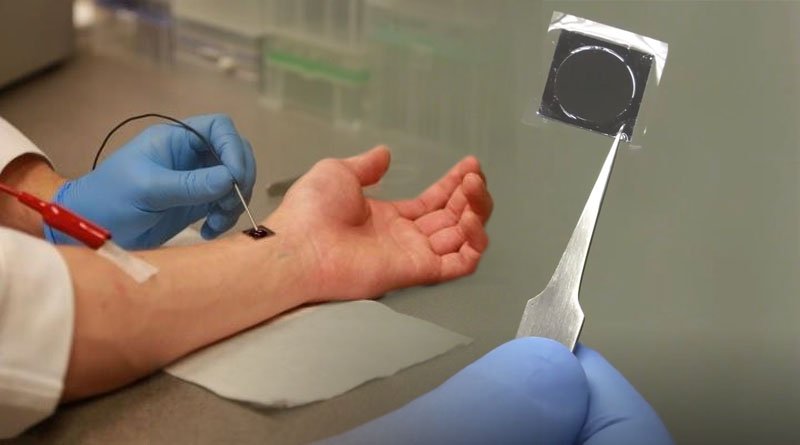“Without any doubt, nanotechnology has explicitly broadened the horizons of regenerative medicine with stem cell-based therapies and direct cell reprogramming”.

Tissue nanotransfection (TNT) is a non-invasive method of reprogramming one cell type into another. The technology is based on the use of a TNT chip loaded with a specific biological cargo containing transcription factors (TFs) capable of cellular reprogramming. A minute electric current drives such factors into the skin cells.
Mature cells are differentiated into pluripotent stem cells, which can then develop into any cells and replace the tissues that have been damaged or lost due to degenerative diseases and injuries. TNT allows the safe reprogramming of cells in the body without the need for immunosuppression and can be used as a point-of-care strategy. Moreover, the technology is extremely rapid (it takes half an hour), harmless, easy to perform, and does not involve the use of stem cells.
TNT can be significantly used to heal wounds and burns, repair ischemic tissue, treat lymphedema, minimize diabetes complications, and convert skin cells into electrophysiologically active induced neuronal cells. The increased prevalence of skin disorders and chronic diseases has significantly raised the demand for such advanced technologies.
A lot of government and private organizations have put money into R&D for tissue nanotransfection, which has increased its value on the global market. Globally, TNT was valued at USD 2.07 billion in 2020 and is expected to reach USD 7.06 billion by 2028. The US, UK, Germany, France, India, China, South Korea, and Japan are the countries with the most to do with this huge and fast growth.
Many recent studies have reported TNT as a novel, non-viral approach for in vivo reprogramming of skin cells in cell cultures, mice, murine, and other animal models and is carried out in various counties including Pakistan. So, when it comes to mice, successful cell transformation is seen at the site of an injury or when a cell is transplanted to a different site.
This technology significantly prevents tissue death from cell necrosis and loss of tissues or limbs after injury. In Pakistan and other countries, researchers are more hopeful to move toward human trials of TNT that will be effective for diabetic individuals having a high risk of limb or digit loss.
TNT has emerged as an innovative technology that is simple, efficient, cost-effective, and a proof that we are efficiently heading toward achieving our goals that seemed impracticable until now. Although the technology has been successful in the treatment and prevention of various diseases, there is one big shortcoming, it is still in its trial period.
In this regard, more clinical studies are required to get equitable results. As a result, it is imperative that these experiments on humans and animals be expanded to include significant research against a wide range of diseases.
